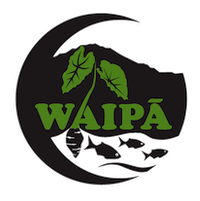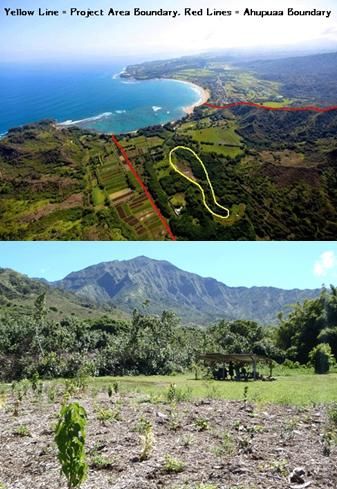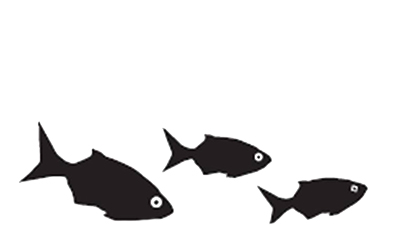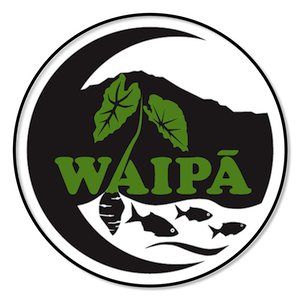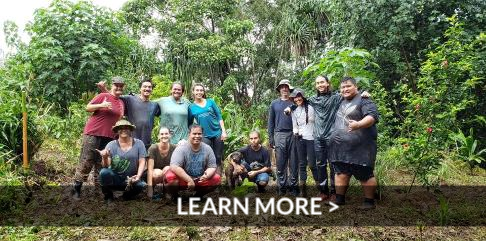NEWS
Waipā
Waipā Stream Restoration Project Update
In 2011 we started an exciting new project at Waipā to restore an area of Waipā Stream that had become blocked with dense stands of hau bush over many years. While hau (hibiscus tiliaceus) has a history as a very useful resource plant in Hawai`i, it also exhibits invasive tendencies in stream and wetland environments when left unmanaged. An extreme example of this was found at Waipā, where hau had grown into the stream causing sediment and plant debris to fill up the stream channel. This degraded important spawning habitat and created substantial obstacles for migrating native fish and prawns that have to pass through this section of the stream at least twice during their life cycle.
The Waipā Stream Restoration Project was designed to remove barriers to fish passage and enhance habitat for native aquatic species in Waipā Stream. It is also improving wetland and riparian habitats along the stream that are important for endangered native waterbirds (such as the Nene goose and Koloa duck) and the Hawaiian Hoary Bat.
As of March 2013, several acres of hau bush have been cleared along the choked reach of Waipa Stream. Much of the cleared hau material was chipped on-site to create mulch used for erosion control in the clearing areas. In flood-prone areas where mulching is not suitable, hau is being burned with the resulting charcoal and ash harvested for use in Waipā‘s gardens and taro loi. Approximately 1,000 feet of the stream channel has been cleaned of hau debris, and fish passage conditions in the project area have improved already.
Outplanting of the clearings with native Hawaiian and canoe plants began in July 2011 and is ongoing. There has been a strong focus on cultural plants that will produce food or other resources that can be used for the Waipā Foundation’s various educational and cultural activities and programs.
An important element of the Waipā Stream Restoration Project is monitoring the impacts of the restoration work on the stream’s water quality and aquatic life. To accomplish this, monitoring programs have been established to regularly measure streamflow and water quality at various points along the stream. Also, net surveys are being performed in the Waipā Stream Estuary and snorkel surveys are being conducted in the stream at several sites to collect data about habitat quality and habitat use by native and non-native species. Interns funded by AmeriCorps and the Hawaii Youth Conservation Corps have been important in carrying out the project’s monitoring programs.
Funding for the project is being provided by the Hawaii Community Foundation (HCF), The National Oceanographic and Atmospheric Administration (NOAA) and the US Fish and Wildlife Service (USFWS). Matching funds are being provided by Kamehameha Schools and The Waipā Foundation. Volunteer efforts on this project will be extremely important to its long-term success. Over 1,000 volunteers have already contibuted to the Waipā Stream Restoration Project. A series of community workday events is planned for spring/summer 2013 . If you would like to volunteer please contact the project manager, Matt Rosener, at laminarmatt@gmail.com or call the Waipā Foundation at 826-9969.
